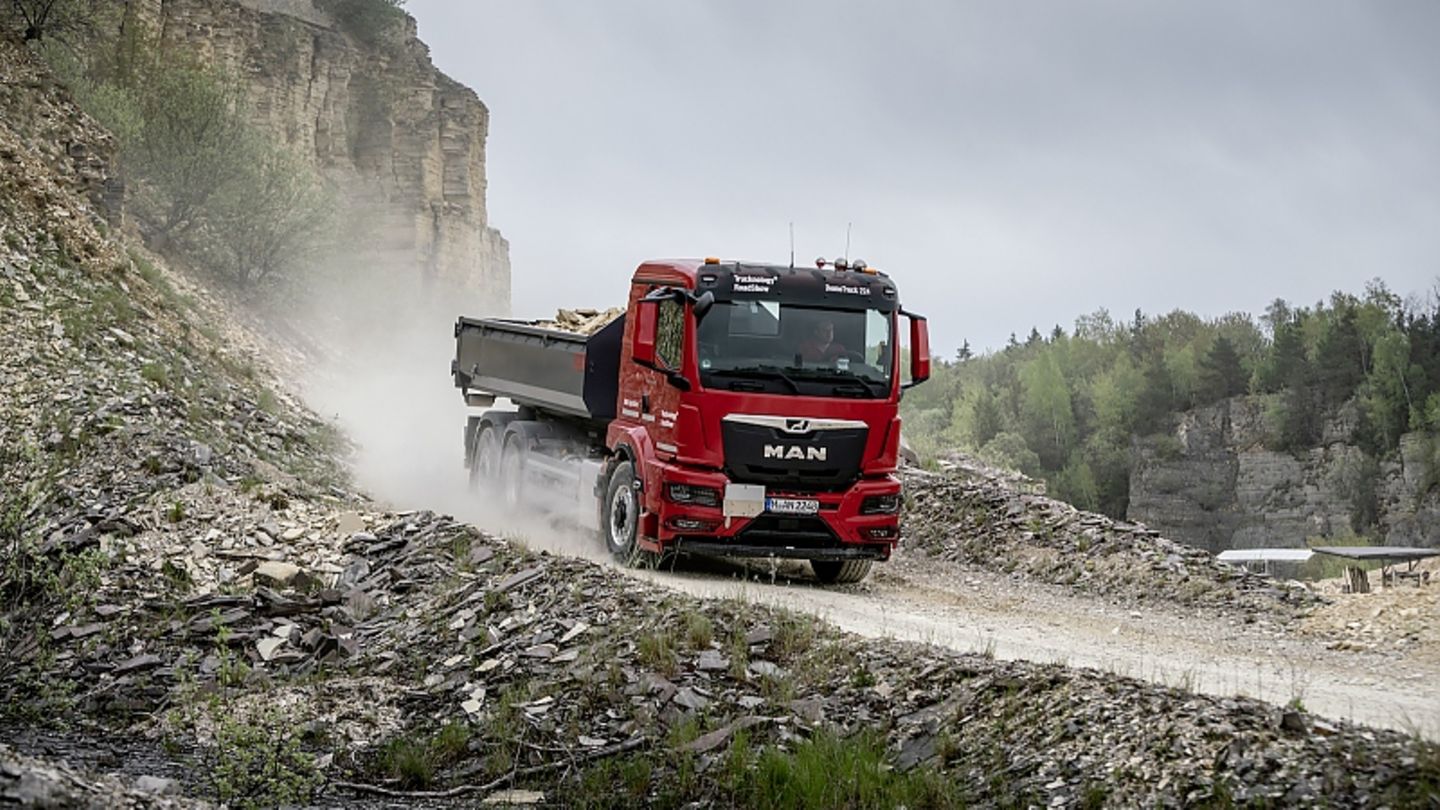More and more vehicles are on the road with all-wheel drive. Not only real off-road vehicles and high-performance athletes benefit from the traction advantage, but also ordinary everyday cars from small cars to buses. With trucks, it goes one step further. MAN has developed a short-term all-wheel drive called Hydrodrive, which can help you out of dire straits.
There are various types of all-wheel drive in vehicles. The classic way of doing this is to divert engine power from the drive axle via an additional gearbox. This turns a vehicle with only one driven axle into an all-wheel drive. Conventionally, there is no way around a cardan shaft that directs the force backwards or forwards. Some manufacturers, mostly those who do not have a real all-wheel drive in their range, are now making use of electric motors. Because, for example, in some models from Peugeot, Lexus or DS, only the front axle is connected to the combustion engine and only an electric motor works on the rear axle, to which there is no mechanical connection. In this way, a vehicle with a purely electric drive can also become an all-wheel drive with comparatively manageable effort. Here the motors on the front and rear axles work without a mechanical connection and there is no need for a cardan shaft.
Completely different and much more rustic, a development from the truck manufacturer MAN. Like other manufacturers from the car or truck segment, it also offers a traditional drive on which one or more axles are supplied with engine power via a cardan shaft. For those trucks that only need the additional drive on the front axle for a short time or at low speeds, there is the so-called hydrodrive.
This is an all-wheel drive that can be switched on manually even while driving if the rear wheels are spinning. The engine power is not brought to the front axle via a normal drive and cardan shaft, but hydraulically via a high-pressure oil pump. That is not enough for longer stretches, but just when things are difficult to move forward when approaching the construction site or on loose ground. When the Hydrodrive all-wheel drive is engaged, an oil tank installed behind the truck’s cab and a high-pressure pump presses the oil with gigantic pressure to a toothing on the front axle that drives the wheel. However, this only works up to speeds of just under 30 km / h and for a maximum of five minutes, otherwise the oil bath loses its effect.
The question remains, what is the reason for the great development effort, since normal all-wheel drive versions also exist in the model range of the truck manufacturer and the hydrodrive also has no cost advantages for the buyer of the MAN truck. The prices are on the same level as the normal all-wheel drive. The main reason, however, is the cost advantage, because conventional all-wheel drive increases the vehicle’s consumption. Especially with a truck, where the cent per kilometer is calculated, an additional all-wheel drive has a noticeable effect on the operating costs. Part-time all-wheel drive brings significant cost savings, especially for vehicles that travel 50,000 kilometers or more per year. And possibly a higher payload, because the lack of permanent drive on the front axle saves 400 to 750 kilograms.
But it’s not just about the costs, because the installation space that is required in a large truck for the additional drive on the front axle is enormous. The hydrostatic front-wheel drive from MAN takes up considerable space behind the driver’s cab alone, so the height and center of gravity are on par with comparable road vehicles without a correspondingly driven front axle. This means that there are no noteworthy restrictions on the construction options, which is essential for many customers. This applies, for example, to Euro trailers in normal road traffic or coupling semitrailers that drive into the gravel pit or directly to the construction site – in any weather and any surface.
The test in a model like the MAN TGS 26.510 6x4H with interchangeable container for construction site logistics, fire brigade or waste disposal companies shows that the colossus with its supercharged inline six-cylinder, 375 kW / 510 PS and 2,600 Nm maximum torque with the switchable hydrodrive digs itself out of loose sand and has no significant problems with propulsion in the harder terrain. The truck equipped with a Meiller 21.65 hooklift plows through the loose terrain despite a load of up to 21 tons. Once the sandy ground is covered, the all-wheel drive is switched off while the journey is in progress and you can continue on the paved road with the driven rear axle.
I am a 24-year-old writer and journalist who has been working in the news industry for the past two years. I write primarily about market news, so if you’re looking for insights into what’s going on in the stock market or economic indicators, you’ve come to the right place. I also dabble in writing articles on lifestyle trends and pop culture news.




